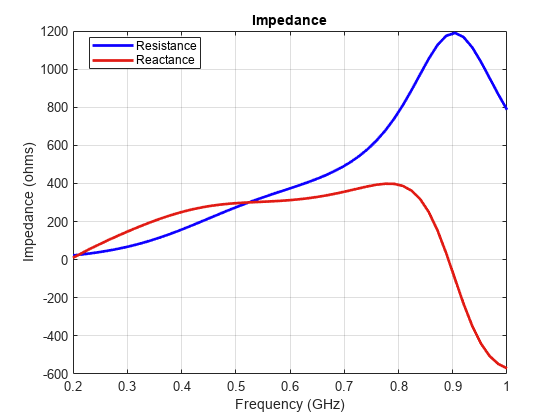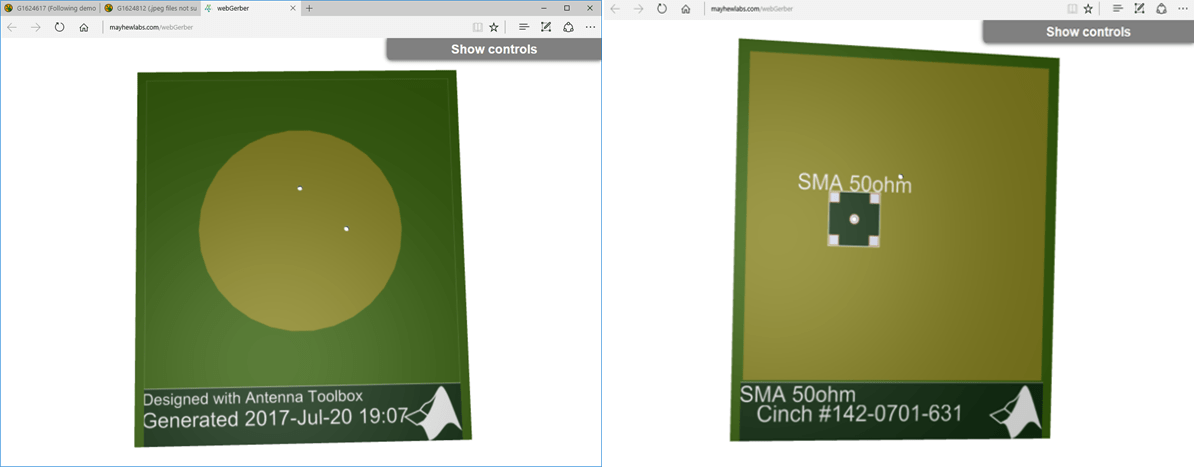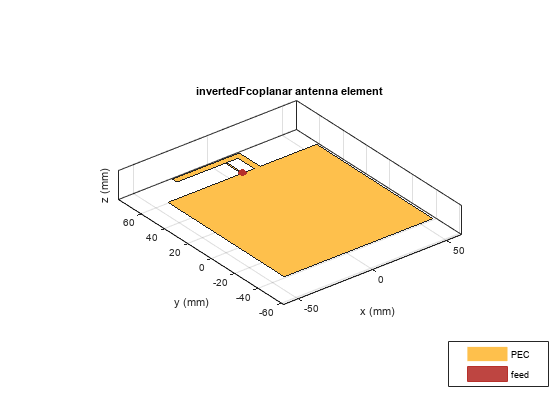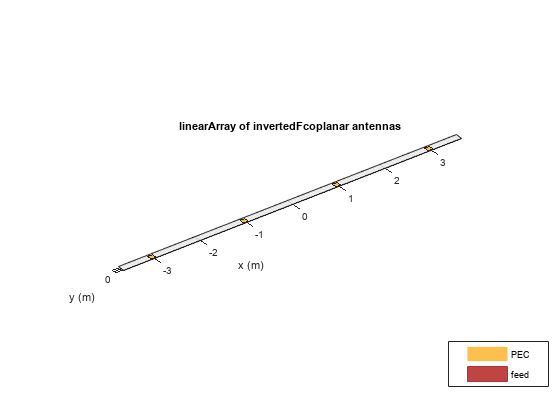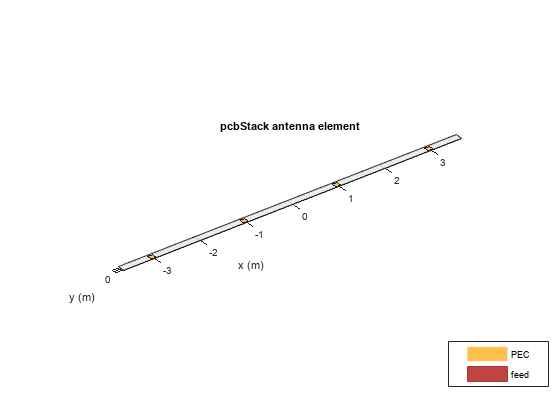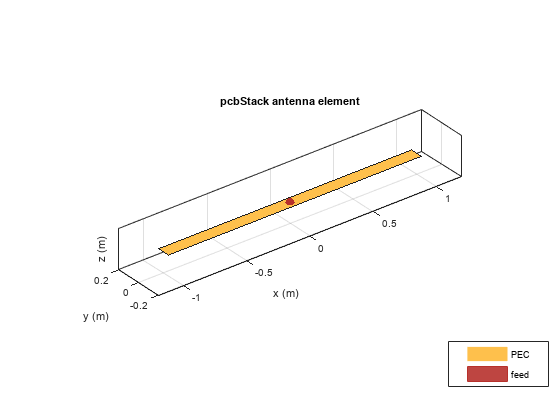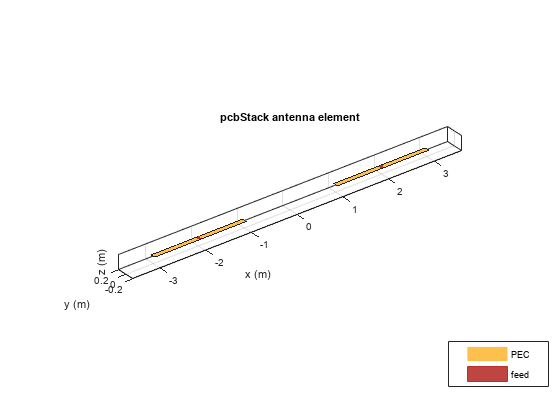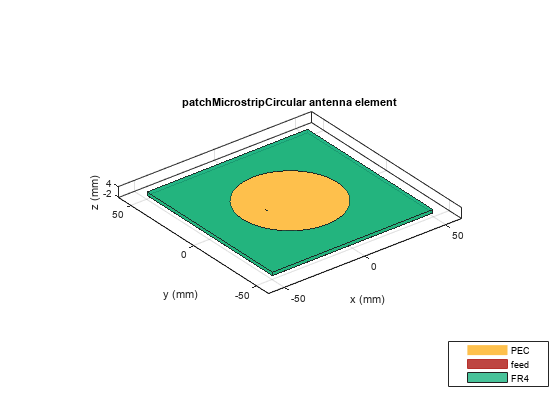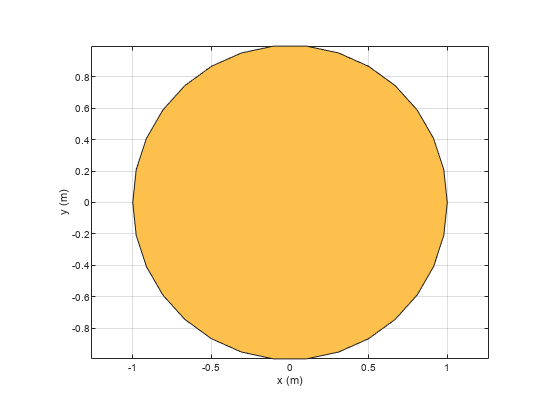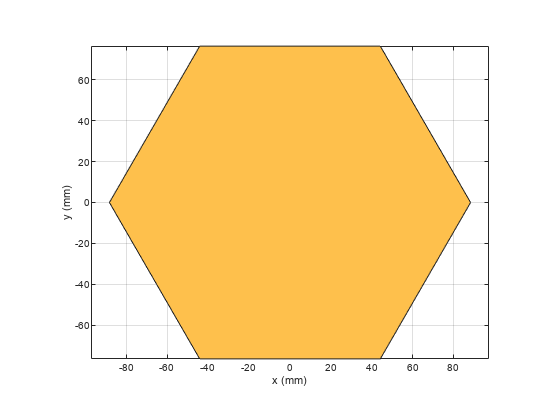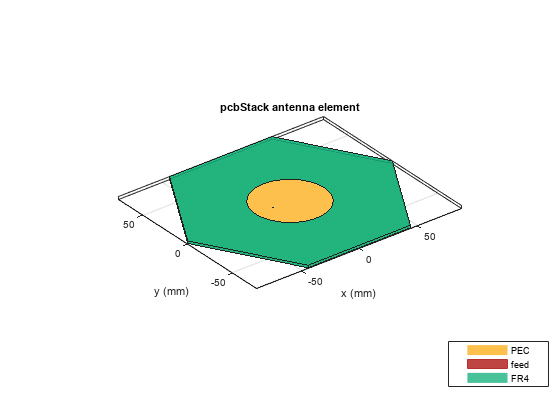pcbStack
Single feed or multi-feed PCB antenna
Description
The pcbStack object is a single feed or multi-feed printed
circuit board (PCB) antenna. Use the pcbStack object:
To create single-layer, multilayer metal, or metal-dielectric substrate antennas.
To create an arbitrary number of feeds and vias in an antenna.
To create a PCB antenna from antenna and array catalog elements.
Note
To generate a Gerber file, a substrate layer is required. Use the
Substrate property to create this layer in the PCB antenna.
For more information, see Convert Circular Microstrip Patch into PCB Antenna
Creation
Description
pcbant = pcbStack
pcbant = pcbStack(PropertyName=Value)PropertyName is the property name
and Value is the corresponding value. You can specify
several name-value arguments in any order as
PropertyName1=Value1,...,PropertyNameN=ValueN.
Properties that you do not specify, retain their default values.
For example, pcbStack(FeedDiameter=2e-04) creates a PCB
antenna with a feed diameter of 0.2 mm.
pcbant = pcbStack(ant)
Properties
Object Functions
array | Create array of PCB stack objects |
axialRatio | Calculate and plot axial ratio of antenna or array |
bandwidth | Calculate and plot absolute bandwidth of antenna or array |
beamwidth | Beamwidth of antenna |
charge | Charge distribution on antenna or array surface |
correlation | Correlation coefficient between two antennas in array |
current | Current distribution on antenna or array surface |
efficiency | Calculate and plot radiation efficiency of antenna or array |
EHfields | Electric and magnetic fields of antennas or embedded electric and magnetic fields of antenna element in arrays |
feedCurrent | Calculate current at feed for antenna or array |
gerberWrite | Generate Gerber files |
impedance | Calculate and plot input impedance of antenna or scan impedance of array |
info | Display information about antenna, array, or platform |
layout | Display array or PCB stack layout |
memoryEstimate | Estimate memory required to solve antenna or array mesh |
mesh | Generate and view mesh for antennas, arrays, and custom shapes |
meshconfig | Change meshing mode of antenna, array, custom antenna, custom array, or custom geometry |
msiwrite | Write antenna or array analysis data to MSI planet file |
pattern | Plot radiation pattern of antenna, array, or embedded element of array |
patternAzimuth | Azimuth plane radiation pattern of antenna or array |
patternElevation | Elevation plane radiation pattern of antenna or array |
peakRadiation | Calculate and mark maximum radiation points of antenna or array on radiation pattern |
phaseShift | Calculate phase shift values for arrays or multi-feed PCB stack |
rcs | Calculate and plot monostatic and bistatic radar cross section (RCS) of platform, antenna, or array |
resonantFrequency | Calculate and plot resonant frequency of antenna |
returnLoss | Calculate and plot return loss of antenna or scan return loss of array |
show | Display antenna, array structures, shapes, or platform |
sparameters | Calculate S-parameters for antenna or array |
stlwrite | Write mesh information to STL file |
vswr | Calculate and plot voltage standing wave ratio (VSWR) of antenna or array element |
Examples
Supported Catalog Elements
The following antennas and arrays from the catalog can be converted into a PCB antenna
by the pcbStack object:
Antennas
Note
Orient these antennas in the xy-plane if required,
before conversion to pcbStack.
Dipole Antennas:
dipole,bowtieTriangular,bowtieRounded, anddipoleBlade.Fractal Antennas:
fractalCarpet,fractalGasket,fractalIsland,fractalKoch,fractalSnowflakeLoop Antennas:
loopCircular,loopRectangularMonopole Antennas:
invertedFcoplanar,invertedLcoplanarPatch Antennas:
patchMicrostrip,patchMicrostripCircular,patchMicrostripElliptical,patchMicrostripEnotch,patchMicrostripHnotch,patchMicrostripInsetfed,patchMicrostripTriangularReflector Antennas:
reflectorandreflectorCircularwith a finite ground plane.Slot Antennas:
slot,vivaldi,vivaldiAntipodal,vivaldiOffsetCavitySpiral Antennas:
spiralArchimedean,spiralEquiangular,spiralRectangularOther Antennas:
lpda,customAntennaGeometry,customArrayGeometry
Arrays
Note
The arrays must be homogeneous, with uniform elements.
linearArraycircularArrayrectangularArray
References
[1] Balanis, C. A. Antenna Theory. Analysis and Design. 3rd Ed. Hoboken, NJ: John Wiley & Sons, 2005.
[2] Stutzman, W. L. and Gary A. Thiele. Antenna Theory and Design. 3rd Ed. River Street, NJ: John Wiley & Sons, 2013.
Version History
Introduced in R2017a


